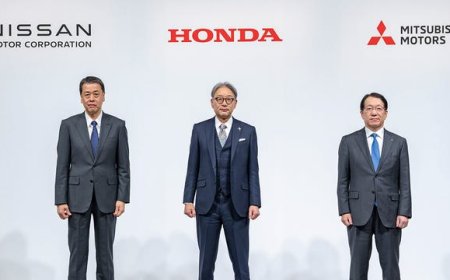Enthusiasts Are Still Hot For The 1984-2001 Jeep Cherokee
Forty years ago, Jeep introduced a compact sport-utility vehicle that rewrote the rule book for personal transportation in America. The second-generation Cherokee, codenamed “XJ,” was sold here in huge numbers from 1984 through 2001, and in that time, this model gave rise to an entire segment of the car market. Nice surviving examples of this practical and… The post Enthusiasts Are Still Hot For The 1984-2001 Jeep Cherokee appeared first on The Online Automotive Marketplace.

Forty years ago, Jeep introduced a compact sport-utility vehicle that rewrote the rule book for personal transportation in America. The second-generation Cherokee, codenamed “XJ,” was sold here in huge numbers from 1984 through 2001, and in that time, this model gave rise to an entire segment of the car market. Nice surviving examples of this practical and tough SUV are highly sought today, and their values are on the rise.
When American Motors launched the XJ Cherokee, it shared very little with the 1974-’83 “SJ”-chassis model that preceded it. Gone were body-on-frame construction and unnecessary bulk, replaced with a trim “UniFrame” body bearing conservatively handsome, well-proportioned styling. Jeep’s trademark part-time Command-Trac or permanent Selec-Trac four-wheel drive systems were available on the new model and gave it a deft blend of carlike traits and off-road ability. Its popularity bled over to an upmarket derivative called the Wagoneer (1984-’90) and a unit body “MJ” pickup that shared the Cherokee’s front-end styling, called the Comanche (1986-’92).

This Cherokee –initially priced at $9,995 for the two-door ($30,225 in today’s dollars) and $10,295 ($31,130) for the four-door–quickly established a reputation for durability and tenacity. Off-road chops were guaranteed thanks to its coil-sprung front and leaf-sprung rear solid axles that were both driven in 4×4 form; a rear-drive variant was later added. In its earliest iteration, the Jeep could be powered by a 2.5-liter AMC four-cylinder, a 2.8-liter General Motors V-6, or a 2.1-liter Renault turbodiesel four; a notably more powerful 4.0-liter AMC inline-six replaced the V-6 for 1987, and this would be the Cherokee’s most coveted engine choice. The XJ received a notable facelift for 1997 that included smoother front and rear styling and a redesigned dashboard containing dual front airbags. Even after being replaced with the 2002 Liberty in our market, this Jeep would stay in production in China through 2014.
These Cherokees were cheap as chips for ages, and most of the nearly 2.9 million (!) examples built were used up and thrown away. Today, you may be as likely to come across a mud-splattered Cherokee with a jacked-up suspension, cut-away fenders, and windows plastered in decals as you could an untouched stock example; the number of well-cared-for, never-rusted XJs with reasonable mileage diminishes by the day. There are still plenty of stock, higher-mileage versions that change hands among Jeep enthusiasts in the $5,000 to $10,000 range, but the best examples of these important SUVs appear to once again be able to command their original MSRP, or even more.

Auction-sale records have been broken in recent years, with the top-selling MJ Comanche being a sub-15,500-mile 1988 Laredo 4×4 that brought $35,525 through Hemmings Auctions; even more impressive was the top-of-the-line, 5,000-mile 2001 Cherokee Limited that sold online for $42,000, some $13,100 more than it stickered for 21 years earlier. With 485 XJ Cherokee sales counted since 2019, classic.com notes the average public-sale price is $13,000. As this is written, the least expensive example on Hemmings.com costs $11,995, and the priciest is $25,000.

The post Enthusiasts Are Still Hot For The 1984-2001 Jeep Cherokee appeared first on The Online Automotive Marketplace.











































